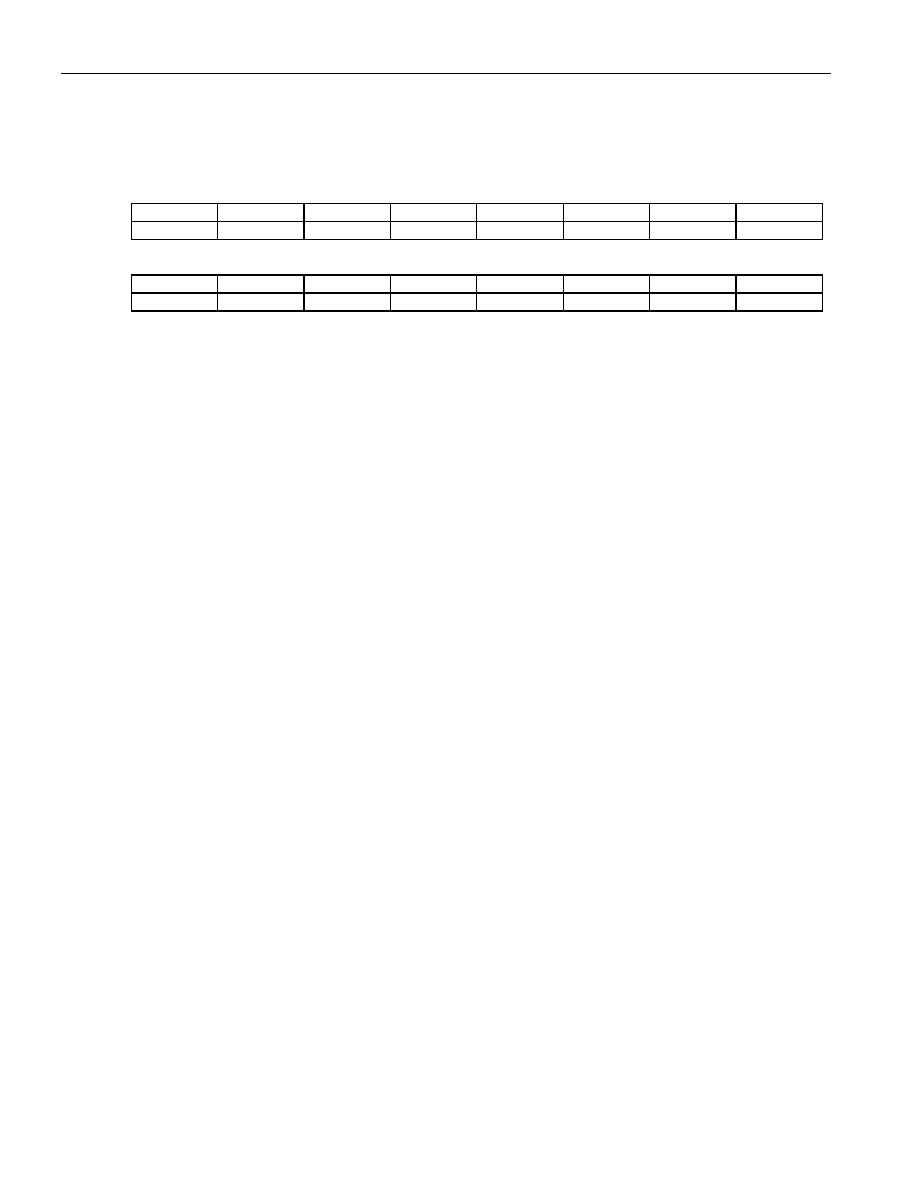- 您現(xiàn)在的位置:買賣IC網(wǎng) > PDF目錄4567 > DS3184N+ (Maxim Integrated Products)IC PACKET PHY W/LIU 400-CSBGA PDF資料下載
參數(shù)資料
| 型號(hào): | DS3184N+ |
| 廠商: | Maxim Integrated Products |
| 文件頁數(shù): | 243/400頁 |
| 文件大小: | 0K |
| 描述: | IC PACKET PHY W/LIU 400-CSBGA |
| 產(chǎn)品培訓(xùn)模塊: | Lead (SnPb) Finish for COTS Obsolescence Mitigation Program |
| 標(biāo)準(zhǔn)包裝: | 40 |
| 類型: | 調(diào)幀器 |
| 應(yīng)用: | 數(shù)據(jù)傳輸 |
| 安裝類型: | 表面貼裝 |
| 封裝/外殼: | 400-BBGA |
| 供應(yīng)商設(shè)備封裝: | 400-PBGA(27x27) |
| 包裝: | 管件 |
第1頁第2頁第3頁第4頁第5頁第6頁第7頁第8頁第9頁第10頁第11頁第12頁第13頁第14頁第15頁第16頁第17頁第18頁第19頁第20頁第21頁第22頁第23頁第24頁第25頁第26頁第27頁第28頁第29頁第30頁第31頁第32頁第33頁第34頁第35頁第36頁第37頁第38頁第39頁第40頁第41頁第42頁第43頁第44頁第45頁第46頁第47頁第48頁第49頁第50頁第51頁第52頁第53頁第54頁第55頁第56頁第57頁第58頁第59頁第60頁第61頁第62頁第63頁第64頁第65頁第66頁第67頁第68頁第69頁第70頁第71頁第72頁第73頁第74頁第75頁第76頁第77頁第78頁第79頁第80頁第81頁第82頁第83頁第84頁第85頁第86頁第87頁第88頁第89頁第90頁第91頁第92頁第93頁第94頁第95頁第96頁第97頁第98頁第99頁第100頁第101頁第102頁第103頁第104頁第105頁第106頁第107頁第108頁第109頁第110頁第111頁第112頁第113頁第114頁第115頁第116頁第117頁第118頁第119頁第120頁第121頁第122頁第123頁第124頁第125頁第126頁第127頁第128頁第129頁第130頁第131頁第132頁第133頁第134頁第135頁第136頁第137頁第138頁第139頁第140頁第141頁第142頁第143頁第144頁第145頁第146頁第147頁第148頁第149頁第150頁第151頁第152頁第153頁第154頁第155頁第156頁第157頁第158頁第159頁第160頁第161頁第162頁第163頁第164頁第165頁第166頁第167頁第168頁第169頁第170頁第171頁第172頁第173頁第174頁第175頁第176頁第177頁第178頁第179頁第180頁第181頁第182頁第183頁第184頁第185頁第186頁第187頁第188頁第189頁第190頁第191頁第192頁第193頁第194頁第195頁第196頁第197頁第198頁第199頁第200頁第201頁第202頁第203頁第204頁第205頁第206頁第207頁第208頁第209頁第210頁第211頁第212頁第213頁第214頁第215頁第216頁第217頁第218頁第219頁第220頁第221頁第222頁第223頁第224頁第225頁第226頁第227頁第228頁第229頁第230頁第231頁第232頁第233頁第234頁第235頁第236頁第237頁第238頁第239頁第240頁第241頁第242頁當(dāng)前第243頁第244頁第245頁第246頁第247頁第248頁第249頁第250頁第251頁第252頁第253頁第254頁第255頁第256頁第257頁第258頁第259頁第260頁第261頁第262頁第263頁第264頁第265頁第266頁第267頁第268頁第269頁第270頁第271頁第272頁第273頁第274頁第275頁第276頁第277頁第278頁第279頁第280頁第281頁第282頁第283頁第284頁第285頁第286頁第287頁第288頁第289頁第290頁第291頁第292頁第293頁第294頁第295頁第296頁第297頁第298頁第299頁第300頁第301頁第302頁第303頁第304頁第305頁第306頁第307頁第308頁第309頁第310頁第311頁第312頁第313頁第314頁第315頁第316頁第317頁第318頁第319頁第320頁第321頁第322頁第323頁第324頁第325頁第326頁第327頁第328頁第329頁第330頁第331頁第332頁第333頁第334頁第335頁第336頁第337頁第338頁第339頁第340頁第341頁第342頁第343頁第344頁第345頁第346頁第347頁第348頁第349頁第350頁第351頁第352頁第353頁第354頁第355頁第356頁第357頁第358頁第359頁第360頁第361頁第362頁第363頁第364頁第365頁第366頁第367頁第368頁第369頁第370頁第371頁第372頁第373頁第374頁第375頁第376頁第377頁第378頁第379頁第380頁第381頁第382頁第383頁第384頁第385頁第386頁第387頁第388頁第389頁第390頁第391頁第392頁第393頁第394頁第395頁第396頁第397頁第398頁第399頁第400頁

DS3181/DS3182/DS3183/DS3184
317
Register Name:
PLCP.TEIR
Register Description:
PLCP Transmit Error Insertion Register
Register Address:
(1,3,5,7)52h
Bit #
15
14
13
12
11
10
9
8
Name
—
REIME
CREIIE
REIEI
PBEE
CPEIE
PEI
Default
0
Bit #
7
6
5
4
3
2
1
0
Name
—
FEE
FEIC1
FEIC0
FEI
TSEI
MEIMS
Default
0
Bit 13: Remote Error Indication Maximum Error (REIME) – When 0, an REI error is generated by inserting a
value of 1h (single error) into the REI bits (G1[1:4]). When 1, an REI error is generated by inserting a value of 8h
(eight errors) into the REI bits.
Bit 12: Continuous Remote Error Indication Error Insertion Enable (CREIIE) – When 0, single remote error
indication (REI) error insertion is enabled. When 1, continuous REI error insertion is enabled, and REI errors will be
continuously transmitted if REIEI is high.
Bit 11: Remote Error Indication Error Insertion Enable (REIEI) – When 0, REI error insertion is disabled. When
1, REI error insertion is enabled.
Bit 10: Parity Block Error Enable (PBEE) – When 0, a parity error is generated by inverting a single bit in the B1
byte. When 1, a parity error is generated by inverting all eight bits in the B1 byte.
Bit 9: Continuous Parity Error Insertion Enable (CPEIE) – When 0, single parity (BIP-8) error insertion is
enabled. When 1, continuous parity error insertion is enabled, and parity errors will be transmitted continuously if
PEI is high.
Bit 8: Parity Error Insertion Enable (PEI) – When 0, parity (BIP-8) error insertion is disabled. When 1, parity (BIP-
8) error insertion is enabled.
Bit 5: Framing Byte Error Enable (FEE) – When 0, a framing bit error is generated by inverting a single bit in the
indicated byte. When 1, a framing byte error is generated by inverting all eight bits of the indicated byte.
Bits 4 to 3: Framing Error Control (FEIC[1:0]) – These two bits control the type of framing error event to be
inserted.
00 = single A1 or A2 error (1 per sub-frame maximum).
01 = single POI (P#) error (1 per 2 sub-frames maximum).
10 = both an A1 and an A2 error in the same sub-frame.
11 = two POI (P#) errors in consecutive sub-frames.
Bit 2: Framing Error Insertion Enable (FEI) – When 0, framing error insertion is disabled. When 1, framing error
insertion is enabled.
Bit 1: Transmit Single Error Insert (TSEI) – This bit causes an error of the enabled type(s) to be inserted in the
transmit data stream if manual error insertion is disabled (MEIMS = 0). A 0 to 1 transition causes a single error to
be inserted. For a second error to be inserted, this bit must be set to 0, and back to 1. Note: If MEIMS is low, and
this bit transitions more than once between error insertion opportunities, only one error will be inserted.
Bit 0: Manual Error Insert Mode Select (MEIMS) – When 0, error insertion is initiated by the TSEI register bit.
When 1, error insertion is initiated by the transmit manual error insertion signal (TMEI). Note: If TMEI or TSEI is
one, changing the state of this bit may cause an error to be inserted.
相關(guān)PDF資料 |
PDF描述 |
|---|---|
| DS3184+ | IC PACKET PHY W/LIU 400-CSBGA |
| MAX4507CWN | IC SIGNAL LINE PROTECTOR 18-SOIC |
| MAX4507CAP | IC SIGNAL LINE PROTECTOR 20-SSOP |
| LFXP20C-4F484I | IC FPGA 19.7KLUTS 340I/O 484-BGA |
| MAX4505EUK-T | IC SIGNAL LINE PROTECTOR SOT23-5 |
相關(guān)代理商/技術(shù)參數(shù) |
參數(shù)描述 |
|---|---|
| DS3184N+ | 功能描述:網(wǎng)絡(luò)控制器與處理器 IC Quad ATM/Packet PHYs w/Built-In LIU RoHS:否 制造商:Micrel 產(chǎn)品:Controller Area Network (CAN) 收發(fā)器數(shù)量: 數(shù)據(jù)速率: 電源電流(最大值):595 mA 最大工作溫度:+ 85 C 安裝風(fēng)格:SMD/SMT 封裝 / 箱體:PBGA-400 封裝:Tray |
| DS318PIN | 制造商:未知廠家 制造商全稱:未知廠家 功能描述:Industrial Control IC |
| DS-318PIN | 制造商:MA-COM 制造商全稱:M/A-COM Technology Solutions, Inc. 功能描述:Plug-In Two-Way Power Divider, 5 - 500 MHz |
| DS-318-PIN | 功能描述:信號(hào)調(diào)節(jié) RoHS:否 制造商:EPCOS 產(chǎn)品:Duplexers 頻率:782 MHz, 751 MHz 頻率范圍: 電壓額定值: 帶寬: 阻抗:50 Ohms 端接類型:SMD/SMT 封裝 / 箱體:2.5 mm x 2 mm 工作溫度范圍:- 30 C to + 85 C 封裝:Reel |
| DS319 | 制造商:未知廠家 制造商全稱:未知廠家 功能描述:Two-Way Power Divider 10500 MHz |
發(fā)布緊急采購,3分鐘左右您將得到回復(fù)。